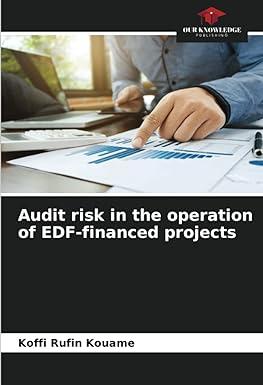Question
Assume instead that on January 1, 2009, Roberts Corporation acquired 80 percent of the outstanding voting stock of William Company in exchange for $1,200,000 cash.
Assume instead that on January 1, 2009, Roberts Corporation acquired 80 percent of the outstanding voting stock of William Company in exchange for $1,200,000 cash. At that time, although William's book value was $925,000, Roberts assessed William's total business fair value at $1,500,000.
The book values of William's individual assets and liabilities approximated their fair values at the acquisition date, except for the equipment account, which was undervalued by $350,000. The undervalued equipment had a five-year remaining life at the acquisition date. Any remaining excess fair value was attributed to goodwill. No goodwill impairments have occurred.
During its first year of combined operations, William earned net income of $180,000 and paid dividends totaling $30,000. William immediately began supplying inventory to Roberts. Below are the details of the intercompany inventory sales for the current year:
Year | Intercompany sales | Intercompany ending inventory at transfer price | Gross profit rate on intercompany inventory transfers |
|---|---|---|---|
2009 | $125,000 | $80,000 | 25% |
Separate financial statements for both companies as of December 31, 2009, are shown below:
Roberts | William | |
|---|---|---|
Revenues | $(1,740,000) | $(900,000) |
Cost of goods sold | $820,000 | $500,000 |
Depreciation expense | $104,000 | $85,000 |
Amortization expense | $220,000 | $120,000 |
Interest expense | $20,000 | $15,000 |
Income from Subsidiary | $(72,000) | 0 |
Net Income | $(648,000) | $(180,000) |
Retained earnings, 1/1/09 | $(2,800,000) | $(125,000) |
Net Income (above) | $(648,000) | $(180,000) |
Dividends paid | $200,000 | $30,000 |
Retained earnings, 12/31/09 | $(3,248,000) | $(275,000) |
Cash | $691,000 | $115,000 |
Accounts receivable | $500,000 | $215,000 |
Inventory | $990,000 | $800,000 |
Investment in William Stock | $1,248,000 | 0 |
Buildings and equipment (net) | $1,025,000 | $863,000 |
Patents | $950,000 | $107,000 |
Total assets | $5,404,000 | $2,100,000 |
Accounts payable | $(411,000) | $(200,000) |
Notes payable | $(545,000) | $(825,000) |
Common stock | $(900,000) | $(700,000) |
Additional paid-in capital | $(300,000) | $(100,000) |
Retained earnings, 12/31/09 (above) | $(3,248,000) | $(275,000) |
Total liabilities and stockholders' equity | $(5,404,000) | $(2,100,000) |
Based on the information given above, complete the following tasks:
- Assuming that Roberts accounts for its investment in William using the equity method, prepare all necessary general journal entries for the year ending December 31, 2009. Include supporting calculations of all amounts in a separate schedule.
- Next, prepare the eliminating entries needed at January 1, 2009, to prepare the consolidated balance sheet as of the date of acquisition. You are not required to prepare the actual consolidated balance sheet.
- Finally, prepare the eliminating entries needed at December 31, 2009, and prepare the consolidated income statement, retained earnings statement, and balance sheet as of December 31, 2009, using spreadsheet software (Microsoft Excel). Be sure to show clearly the noncontrolling interest in both net income and stockholders' equity on your worksheet.
Submit your answers in a Microsoft Excel sheet.
Step by Step Solution
There are 3 Steps involved in it
Step: 1

Get Instant Access to Expert-Tailored Solutions
See step-by-step solutions with expert insights and AI powered tools for academic success
Step: 2

Step: 3

Ace Your Homework with AI
Get the answers you need in no time with our AI-driven, step-by-step assistance
Get Started


